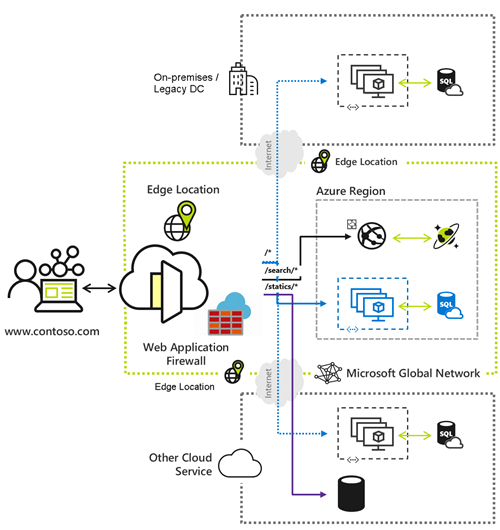Introduction to Azure OpenShift
In the dynamic world of cloud computing, Azure OpenShift has emerged as a groundbreaking solution, combining the strengths of Kubernetes with Red Hat’s OpenShift. This powerful platform, offered by Microsoft in collaboration with Red Hat, is redefining the approach to cloud-native development and deployment, offering unparalleled efficiency, scalability, and security.
Key Features of Azure OpenShift
Azure OpenShift distinguishes itself with a set of key features:
- Seamless Integration with Microsoft Azure Ecosystem: Azure OpenShift is deeply integrated with Azure services, providing users with a unified experience that leverages the full range of Azure’s capabilities, including Azure Active Directory, Azure DevOps, and Azure Storage.
- Enhanced Security and Compliance: The platform offers advanced security features, including integrated monitoring, automated compliance policies, and identity management, ensuring that applications are secure and compliant with industry standards.
- Scalability and Performance Optimization: Azure OpenShift facilitates both horizontal and vertical scaling, ensuring optimal performance even under fluctuating workloads. This scalability is key in managing large-scale applications efficiently.

OpenShift vs. Kubernetes: Understanding Selection Criteria
While both OpenShift and Kubernetes are powerful tools for container orchestration, they cater to different needs:
- Kubernetes is ideal for those who need a lightweight, flexible platform and are comfortable with manual configurations and integrations.
- OpenShift, on the other hand, is preferred by organizations looking for an all-in-one solution with out-of-the-box features, such as automated installation, upgrades, and enhanced security.
The choice between Azure OpenShift and Kubernetes depends on the organization’s specific requirements in terms of security, integration capabilities, and ease of use.
Cost Analysis: Azure OpenShift and Red Hat
Understanding the cost implications is crucial when adopting Azure OpenShift. The costs are twofold:
- Azure Cost Components: These include compute resources, storage, and network usage. Pricing varies based on the chosen Azure region, the size and number of clusters, and additional Azure services used.
- Red Hat Licensing: Red Hat charges for OpenShift licensing, which includes support and access to Red Hat’s enterprise-grade features.
The total cost of ownership for Azure OpenShift will depend on the scale of deployment and the specific configuration chosen.
Benefits of Azure OpenShift for Businesses
Azure OpenShift offers significant benefits:
- Streamlined Application Development and Deployment: It simplifies and accelerates the development process by providing a consistent and integrated environment for building, testing, and deploying applications.
- Cost-Effectiveness and Operational Efficiency: By automating many routine tasks, Azure OpenShift reduces operational overhead, leading to cost savings and improved efficiency.
- Real-World Use Cases: Many businesses have successfully leveraged Azure OpenShift for applications ranging from e-commerce platforms to IoT solutions, benefiting from its flexibility and robustness.
Navigating Azure OpenShift: Practical Insights and Tips
For those embarking on the Azure OpenShift journey, here are some tips:
- Setting Up and Managing Environments: Start with a clear plan for your deployment architecture. Make use of Azure’s monitoring and management tools to maintain a healthy and secure environment.
- Best Practices for Developers and IT Professionals: Embrace the principles of DevOps, and make use of Azure OpenShift’s CI/CD capabilities for efficient development cycles.
- Troubleshooting Common Challenges: Leverage Azure’s extensive documentation and Red Hat’s support services to resolve any issues promptly.
The Future of Azure OpenShift and Cloud-Native Solutions
Azure OpenShift is continuously evolving, with Microsoft and Red Hat regularly releasing updates and new features. Its role in shaping the future of cloud computing is significant, as it provides a robust, scalable, and secure platform that is essential for modern, cloud-native applications.
In conclusion, Azure OpenShift is a vital tool for businesses looking to leverage the full potential of cloud computing. With its powerful features, cost-effectiveness, and scalability, it stands as an indispensable component of the modern cloud ecosystem.




